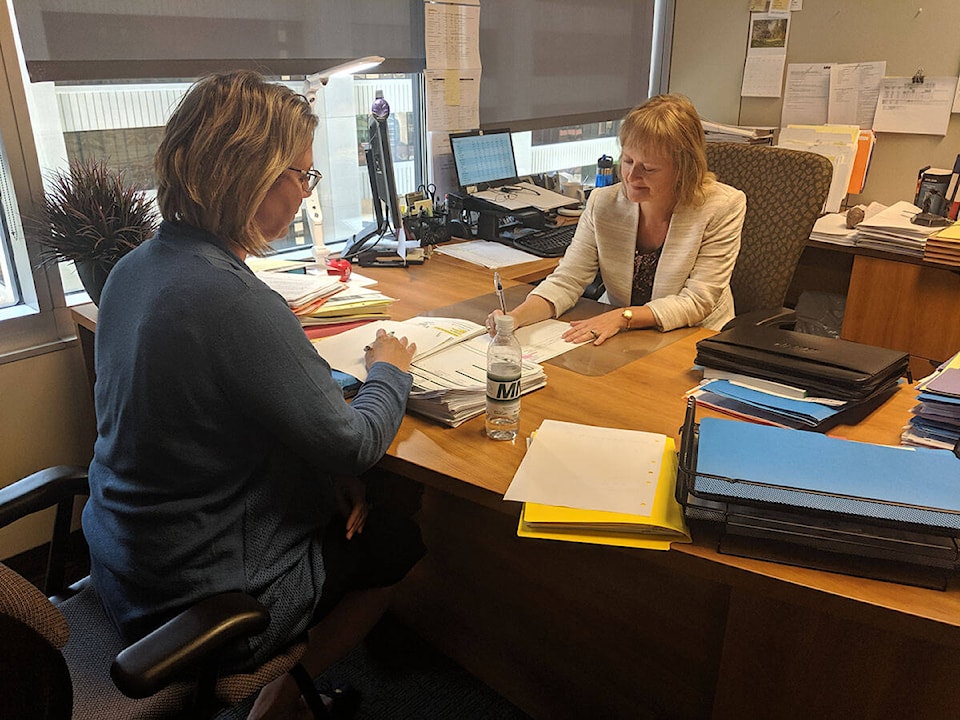Alberta insolvencies have soared to pre-pandemic levels, a trend being seen nationwide.
In November, there were 1,402 insolvency proposals or bankruptcies filed by consumers and businesses — up 12.2 per cent from October and 8.5 per cent higher than in November 2021. It was the highest number of filings in Alberta since March 2020.
Across Canada, there were 9,784 proposals or bankruptcies in November, up 7.3 per cent over October and 17.5 per cent more than in November 2021.
The increases follow several years of lower bankruptcy and insolvency proposals. In Alberta, filings dropped to as low as 1,000 as the federal government’s pandemic financial program CERB began to kick in.
Through the first 11 months of last year, there were 14,964 insolvencies or proposals in Alberta, up 5.9 per cent over the same period in 2021. The number of bankruptcies dropped by 13 per cent — to 2,524 from 2,901. However, proposals, which are ways for people to restructure their finances and being repaying debt without declaring bankruptcy, were up 10.8 per cent to 12,440 from 11,228.
MNP senior vice-president Donna Carson said the expiry of the government programs has had an impact on the household finances and the budget math for many families.
“We have been talking to people who are learning to budget and trying to make ends meet without those benefits again,” said Carson, who is senior vice-president in MNP’s insolvency and restructuring group and oversees Calgary and central Alberta regions.
What the future holds for insolvencies is not clear. In 2022, some months were quite high while others had lower numbers.
“What it says to me is that this year people are struggling with their budgets and there are some who need to look at debt solution options,” she said.
“Whether November of 2022, where we see the spike, is going to be a long-term thing only time will tell.”
Among the factors that will have an impact are interest rates. Most economists are predicting Bank of Canada will further hike interest rates after Statistics Canada’s December job report blew through expectations. While many analysts expected a modest 5,000 jobs would be added, nearly 100,000 more positions were added.
Inflation will also continue to have an impact on household and business finances, with many key essentials, such as groceries and fuel costing much more in most cases, although Albertans are fortunate to have the lowest gasoline costs in the country, which helps.
However, the numbers present a bit of a cloudy picture. For example, from July to October, Alberta’s insolvency numbers were better than the previous three months.
“(Insolvencies) increased earlier this year and then they kind of decreased again.
Carson said the best word to describe what is going on right now is “uncertainty.”
That is fed by unknowns. Big factors that have a national impact such as interest rate increases, but also factors that have more of an individual impact, such as how many hours or overtime someone can count on from their jobs.
“There are just lots of uncertainties that everybody is working their way through right now.”
Carson said MNP will be releasing its next quarterly consumer debt index next week, which should provide a little more clarity on likely trends.
The last index came out in October and showed that Canadians, and especially Albertans, are feeling the financial pinch. Fifty-eight per cent said it has become less affordable to feed themselves and their family — up 10 per cent from the previous quarter. Among those surveyed, 56 per cent said clothing and household necessities are less affordable — a 13 per cent increase.
That Albertans are among the most worried is indicated by the fact 67 per cent of people in this province are concerned about their ability to pay their debts with rising interest rates, which is higher than the national average, which ranges from 53 per cent to 62 per cent depending on income bracket.
Toronto-based licensed insolvency trustees Bromwich+Smith said in a news release that nationwide insolvencies were at the highest level in 32 months.
The surge began in May of this year, likely driven by inflation and ballooning living costs. As well, rising interest rates boosted the cost of variable rate and renegotiated mortgages while reducing housing demand. Also, some had to repay government supports as creditors came calling.
